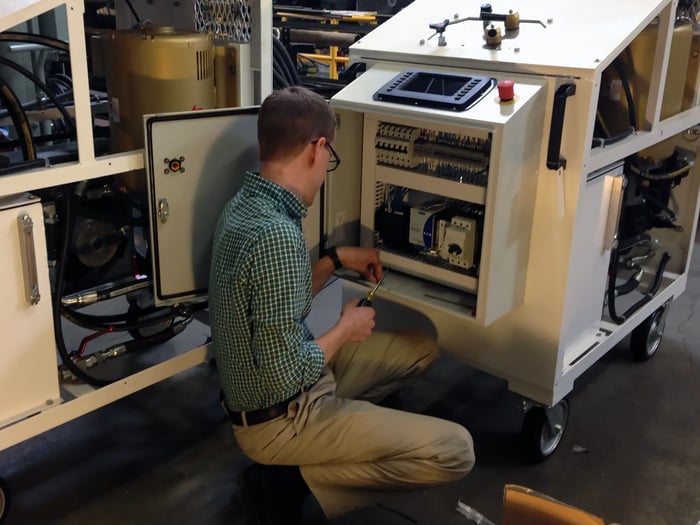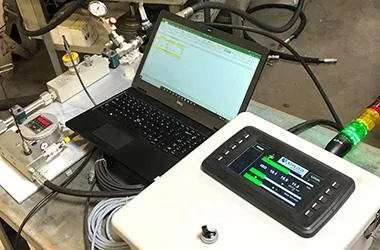Take a Step Further Than Preventative Maintenance
Traditional, preventative maintenance is like an oil change in your car, it’s done based on a “best guess” at how long the given component or fluids will last, in a standard operating environment. While this guess is based on studies, tests and average usage data, there are several factors that could change the lifespan of a component or system.
In predictive maintenance, utilizing advanced sensors can feed component data to a controller or controllers, where it can be analyzed. This analysis predicts when the component will fail based on actual operating conditions vs. assumptions, giving a far more accurate end-of-life estimation. Using a predictive maintenance program could save money by either acting more pro-actively to avoid potential issues or avoiding unnecessary replacement or repair of components or fluids that still have more usable life.
1: Prevent Catastrophic Failures More Accurately
The best guess of a preventative maintenance isn’t always perfect. Perhaps one application is much harsher on the component and causes it to wear in quicker than expected. This disparity can lead to failure before prediction. If this happens while the machine is running, you may be facing unplanned downtime and possibly additional damage as the failed component can flood the system with contamination. Needless to say, avoiding this failure is important. With predictive maintenance, the health of the component is tracked, and premature failure can be predicted and prevented.
2: Only Replace Parts That Need Replacing
In some cases, components may last longer than expected. Think of a car that is driven regularly, but not very often: it may not need service as often as recommended. On a hydraulic machine, this means the part could be replaced with a long life still ahead of it. Money and time are being wasted here by throwing out a good part. Tracking its health can make sure that it actually needs replacing.
3: Plan Downtime at Your Schedule
A predictive maintenance program can provide a better view of component health making your job easier to plan when to take the machine offline to perform maintenance instead of waiting for the warning light or component failure. Or you may even be able to wait to service the machine during regular, planned downtime. To make better use of non-scheduled downtime, group service calls for major component repair together.
 Predictive maintenance allows you to service or replace your hydraulic or electronic components exactly when it's best to do so, when the natural degradation is becoming detrimental, but before catastrophic failure.
Predictive maintenance allows you to service or replace your hydraulic or electronic components exactly when it's best to do so, when the natural degradation is becoming detrimental, but before catastrophic failure.
4: Reduce Hydraulic Troubleshooting Time
Troubleshooting is a lot easier, as the machine data has the ability to tell operators far more data about what the problem may be instead of relying on interpreting the “funny sound” or loss of function to indicate a problem. If the fault is something easy within the operator’s ability to fix, such as tightening a hose connection or replacing a simple part, then no service call is required, not even to troubleshoot. If outside assistance is needed, troubleshooting can be done remotely with telematics. Think of it like the IT department remotely taking control of your computer to find out why something isn’t working. The maintenance provider, or in-house maintenance office, can remotely monitor the machine, where they may be able to spot the problem and identify the corrective measure.
5: Reduce Service Call Time
Because it's possible to know what parts need to be repaired, serviced, or replaced, service calls become much more efficient. Knowing the problem allows maintenance personnel to arrive onsite with the correct parts and tools to get the job done quickly. Gone are the days where they have to leave the job site to retrieve a part, which adds time to the service call and extends downtime. Tracking your machines operating in multiple locations can allow for maintenance to be performed in “rounds” where all necessary repairs, immediate or upcoming, can be done at once on each piece of equipment or in each facility.
Applied Fluid Power Telematics/ Predictive MaintenanceApplied Fluid Power engineers have the experience to set you up with telematics programs that will save you cost. We know the products you need to get started with telematics, the software to make use of sensor data, and the controller to display this data. We even know how to send your data out over the cloud for remote monitoring and troubleshooting. Contact us today to see how we can help save you money on maintenance costs. |

|


